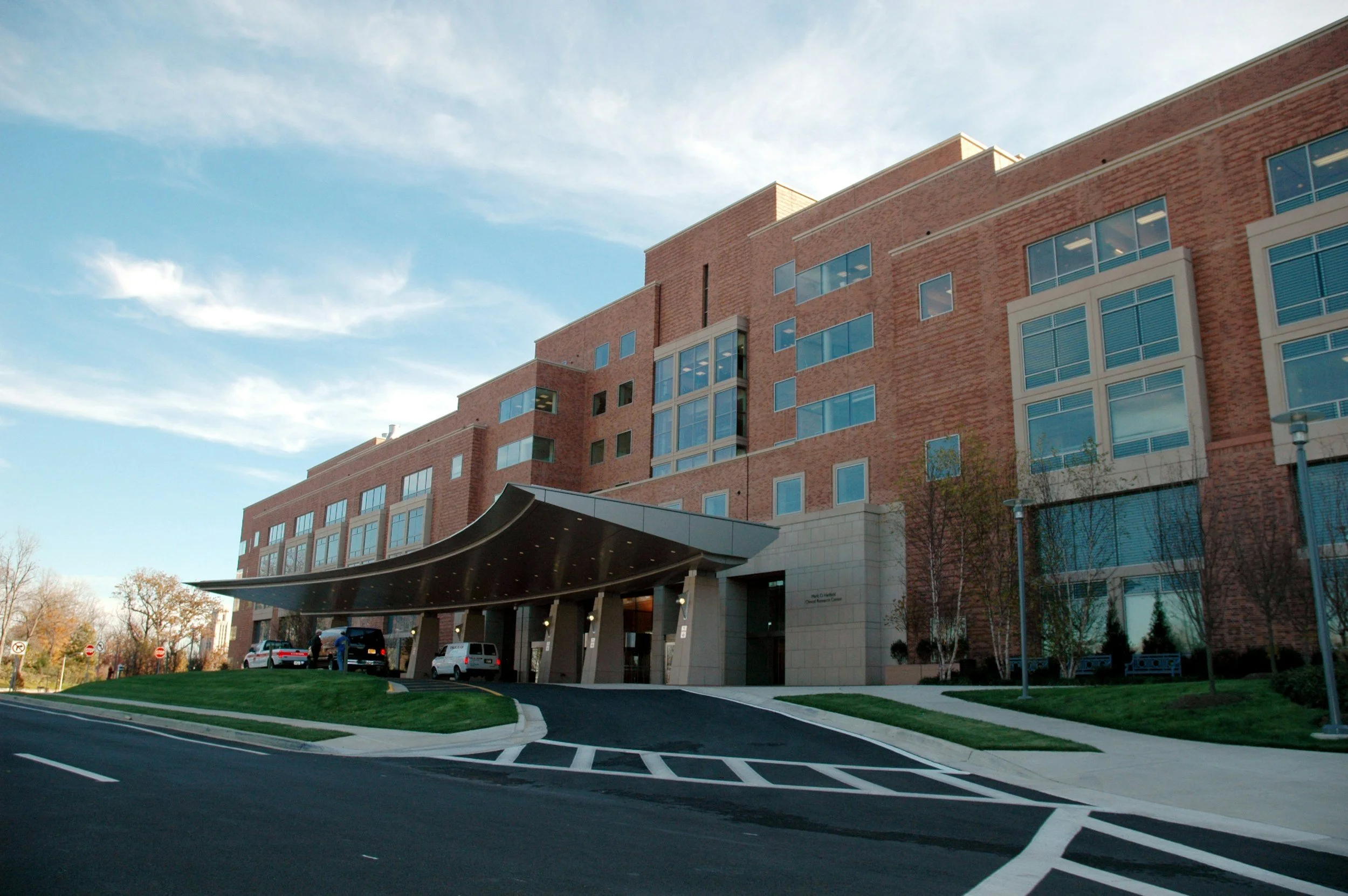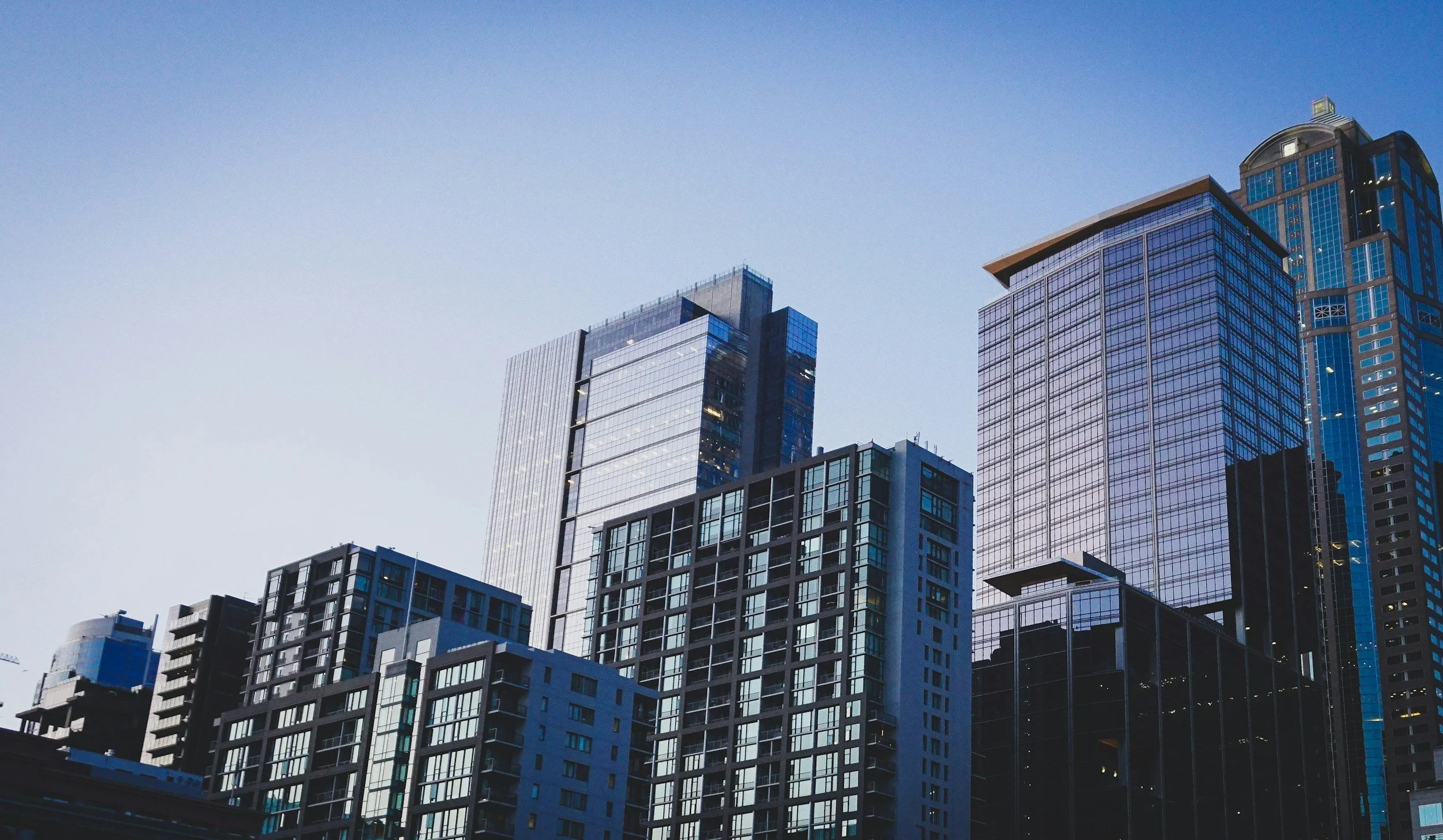The Quiet Rise of Medical Office Buildings (“MOBs”): A $400B Opportunity
While most commercial real estate investors have spent the past decade chasing industrial, luxury multifamily, or trendy retail, another asset class has quietly delivered steady returns, long-term tenants, and recession-proof demand—without the hype.
I’m talking about Medical Office Buildings (MOBs).
These properties aren’t flashy. You won’t find rooftop lounges or valet parking. But behind the understated brick façades, MOBs house one of the most resilient and overlooked income streams in commercial real estate.
And right now, they represent a $400 billion opportunity that more investors are starting to notice.
Healthcare is growing—and it’s not slowing down. Outpatient care is expanding. Aging demographics are driving demand. And while other property types wrestle with remote work and market oversupply, medical tenants are signing long-term leases and sticking around.
In this post, we’ll break down what MOBs are, why they’re thriving in today’s market, and how savvy investors are using them to create predictable cash flow and durable value—even in uncertain times.
What are medical office buildings?
Medical Office Buildings—or MOBs—are commercial properties specifically designed or retrofitted to house healthcare-related tenants. These aren’t general office buildings with a doctor or two leasing a corner suite. MOBs are purpose-built, patient-facing, and central to the way modern healthcare is delivered.
Think outpatient clinics, dental offices, urgent care centers, orthopedic groups, dermatologists, imaging labs, and ambulatory surgical centers. These are the types of tenants you’ll find anchoring MOBs across the country.
🏥 How MOBs Differ from Standard Office or Retail
What makes MOBs unique isn’t just who occupies them—it’s how they function:
Specialized buildouts: Many medical tenants require custom plumbing, lead-lined rooms, high HVAC performance, ADA-compliant access, and reinforced infrastructure. This makes relocating a costly and time-consuming process—which keeps tenants in place longer.
High retention: Because of the tenant investment and the regulatory complexity of healthcare, medical practices tend to renew leases at a much higher rate than traditional office users.
Patient traffic and access: Unlike typical office buildings, MOBs are designed with patient convenience in mind—think abundant parking, elevator access, and proximity to hospitals or major residential corridors.
🧠 Who Owns MOBs?
Ownership of MOBs spans a wide range:
REITs and institutional players — focused on large, stabilized portfolios with major health system anchors
Family offices — drawn to the long-term income and estate planning advantages
Private investors and syndicators — increasingly entering the space via mid-sized suburban deals or triple net offerings
Whether you’re looking for a cash-flowing, recession-resistant play or a passive investment vehicle, MOBs are flexible enough to fit a range of strategies.
Up next, we’ll look at why demand for MOBs is accelerating in 2025 and beyond, and what market forces are making this sector one of the most attractive in commercial real estate today.
Why mOBs are taking off in 2025 and beyond
While many CRE sectors are navigating a new normal—softening demand, interest rate pressure, tenant downsizing—Medical Office Buildings are moving in the opposite direction. They’re becoming more essential, more in-demand, and more valuable with every demographic shift and healthcare evolution.
Let’s break down the forces propelling this asset class forward.
🩺 1. Healthcare Demand Is Only Growing
The U.S. population is aging rapidly. By 2030, one in five Americans will be over 65—and older adults account for more doctor visits, more chronic care needs, and more outpatient procedures.
That translates into:
Increased demand for outpatient care centers
Growth in preventative, diagnostic, and specialty practices
A larger patient base spread across suburban and secondary markets
Healthcare isn’t a trend—it’s a necessity. And that makes MOBs one of the most stable demand drivers in CRE.
🌍 2. The Shift to Outpatient Care Is Permanent
Hospitals are expensive. That’s why healthcare systems are offloading more services to lower-cost, outpatient facilities—which means more clinics, satellite offices, and same-day procedure centers located outside the hospital campus.
This is great news for investors:
It decentralizes care delivery
It drives tenant demand in suburban and infill locations
It opens up acquisition opportunities for smaller investors, not just institutions
As healthcare becomes more retail-like in experience, MOBs become more widespread—and more profitable.
🧷 3. Strong Tenant Stickiness and Long-Term Leases
Medical tenants don’t move easily. Their spaces require heavy investment in:
Plumbing, ventilation, electrical, and custom exam room buildouts
Compliance with ADA, HIPAA, and OSHA regulations
Specialized equipment installation
That upfront investment leads to:
7–15 year lease terms
Higher renewal rates
Built-in rent escalations that increase NOI year over year
For the landlord, that means predictable income with low turnover risk.
🧾 4. Passive-Friendly Lease Structures
Many MOB leases are structured as triple net (NNN) or modified gross—shifting maintenance, taxes, and insurance responsibilities to the tenant. This lowers overhead and simplifies operations, especially for investors who want stable, passive income without hands-on management.
It’s one of the reasons why MOBs are increasingly popular with:
1031 exchange buyers
Family offices
Retirement-focused investors
Real estate syndications offering mailbox money
💡 Bottom Line
Medical Office Buildings sit at the intersection of demographic inevitability and operational efficiency. They’re built to serve essential needs, structured for long-term returns, and accessible to a wider range of investors than ever before.
Up next, we’ll dive into why capital is flowing into MOBs right now—and how private and institutional investors are positioning themselves to take advantage.
Why investors are taking notice
Until recently, Medical Office Buildings were a niche within commercial real estate—well-known among institutions, but largely under the radar for private investors.
That’s changing fast.
MOBs are attracting more attention in 2025 not because they’re trendy—but because they’re resilient, cash-flowing, and increasingly accessible. Here’s why everyone from REITs to retail investors is getting in.
💰 1. Stable, Predictable Cash Flow
MOBs generate consistent income thanks to:
Long-term leases (often 7–15 years)
Built-in rent escalations (commonly 2–3% annually)
Low tenant turnover due to customized spaces and heavy regulatory compliance
Investors love this because it creates year-over-year NOI growth without aggressive value-add tactics. In an uncertain interest rate environment, that predictability matters more than ever.
📉 2. Low Volatility — Even During Downturns
The COVID era showed us which assets are recession-proof and which are not.
While traditional office struggled and retail got hammered, medical tenants stayed open. Many MOBs maintained near-full occupancy and rent collections throughout the pandemic.
That’s because:
Patients still need care during downturns
Healthcare providers are essential businesses
Government support helped stabilize the sector
Now, post-COVID, the appeal is clear: MOBs don’t just survive tough markets—they outperform.
🏢 3. Institutions Are Buying In (And So Are Family Offices)
You know an asset class is heating up when both institutional and ultra-high-net-worth capital shows up.
REITs and healthcare funds are acquiring MOB portfolios aggressively
Family offices are turning to MOBs for steady income and legacy planning
Syndicators and 1031 buyers are using them for cash flow, appreciation, and tax efficiency
This capital influx means values are climbing—but it also validates MOBs as a core CRE strategy, not a specialty play.
🧩 4. More Access for Individual Investors
You no longer need to buy a $30M Class A medical center next to a hospital to get into MOBs.
Today’s investors are finding:
Suburban MOBs under $5M with strong tenancy
Net-leased medical retail centers with credit anchors
Syndicated opportunities to co-invest passively in larger deals
DSTs (Delaware Statutory Trusts) structured around MOB portfolios for 1031 exchanges
In short, the barrier to entry is lower—but the upside is still strong.
Up next, we’ll get tactical and walk through what makes a great MOB investment (and what to avoid), so you can spot opportunity when it hits your desk.
what to look for in a great MOB Investment
Medical Office Buildings offer reliable returns—but like any asset class, not all deals are created equal.
Whether you’re underwriting your first MOB property or scaling into a larger healthcare-focused portfolio, knowing what to look for can mean the difference between a cash-flowing asset and an operational headache.
Here’s how experienced investors evaluate medical office deals in today’s market.
📍 1. Location, Location… Hospital Proximity Optional
While MOBs near major hospitals are still desirable, the real demand growth is happening in:
Suburban population centers
Neighborhood retail corridors
Areas with strong visibility, signage, and access
Outpatient care is moving closer to where patients live—not where hospitals are headquartered. Look for:
Easy ingress/egress
Ample surface parking
Ground-floor access if multi-tenant
Strong healthcare demand demographics (aging population, income stability)
🧾 2. Creditworthy, Needs-Based Tenants
Ideal tenants provide essential, recurring care:
Primary care
Dental
Physical therapy
Urgent care
Dermatology
Imaging / diagnostics
Behavioral health
These practices:
Attract consistent patient flow
Rely heavily on location for retention
Tend to sign long-term leases and invest heavily in their space
Vet the tenant’s financials, years in business, payer mix (insurance vs. private pay), and whether they’re part of a larger network or group practice.
🧰 3. Buildout Quality and Infrastructure
A key value driver of MOBs is the tenant’s investment in their space.
Strong indicators of tenant “stickiness” include:
Extensive plumbing or power upgrades
Specialized treatment rooms
Imaging or lab infrastructure
Heavy capital improvements the tenant paid for directly
If they’ve spent $250K–$1M building out the suite, chances are they’re not leaving anytime soon.
📜 4. Favorable Lease Structure
The strongest MOB leases tend to include:
NNN terms or modified gross with pass-throughs
Built-in annual rent escalations (2%–3%)
Personal guarantees or corporate backing, where possible
Long initial terms (7–15 years) with renewal options
These leases create passive, inflation-protected income that’s easy to forecast and underwrite.
🧠 5. Intangibles That Drive Value
Other signs of a great MOB deal:
Anchored by a well-known local provider or health system tenant
Tenant mix includes complementary services (e.g. PT + orthopedic surgeon)
ADA compliance and modern mechanicals
Strong nearby referral networks (other providers, pharmacies, gyms, etc.)
And of course—buy below replacement cost whenever possible. With construction costs through the roof, that alone can give you a huge advantage.
Up next, we’ll quickly cover the potential risks with MOB investing—and how to sidestep the most common pitfalls before you close your next deal.
Risks and how to Mitigate them
Medical Office Buildings are among the most stable assets in commercial real estate—but no investment is without risk.
To build a MOB portfolio that performs through market cycles, investors need to understand where the vulnerabilities lie—and how to proactively protect their downside.
Let’s break down the key risks and how experienced investors avoid them.
⚠️ 1. High Buildout Costs and Capital Exposure
Medical tenants often require expensive custom buildouts—plumbing, HVAC upgrades, imaging infrastructure, ADA improvements.
The risk:
If a tenant vacates and the space is too specialized, you may face long downtime or expensive reconfiguration costs to re-lease.
How to mitigate:
Buy properties with broadly usable medical layouts (exam rooms, admin space, private offices)
Focus on multi-tenant MOBs to reduce single-tenant exposure
Prioritize tenants with long lease terms and a history of renewal
Negotiate tenant responsibility for certain buildout costs in new leases
🏗️ 2. Regulatory and Zoning Complexity
Healthcare uses must meet strict local, state, and federal compliance standards—from HIPAA to OSHA, ADA, and state health codes.
The risk:
Zoning restrictions or compliance issues can delay leasing, complicate redevelopment, or deter future tenants.
How to mitigate:
Work with a broker or advisor experienced in MOB leasing
Confirm medical use is allowed by-right in the current zoning
Obtain a zoning report and consult your local healthcare permitting authority during due diligence
🧱 3. Liquidity and Exit Strategy Constraints
MOBs are less liquid than other asset types. There are fewer buyers, and deals can take longer to market and close—especially in smaller metros.
The risk:
If you need to sell quickly, it may take longer or require a pricing concession.
How to mitigate:
Buy in growth markets with strong healthcare fundamentals
Focus on tenanted, income-producing properties over vacant or speculative deals
Structure leases and property management for easy handoff to future buyers (clean financials, NNN leases, renewal options)
📊 4. Overpaying Due to Rising Demand
As MOBs attract more investor interest, competition is increasing—and cap rates are compressing.
The risk:
Paying too much for an average asset with minimal upside or exposure to tenant rollover risk.
How to mitigate:
Stick to fundamentals: strong location, tenant quality, lease structure, and replacement cost
Run multiple downside scenarios during underwriting (vacancy, tenant rollover, CapEx reserves)
Partner with advisors who specialize in healthcare real estate to uncover hidden risks or opportunities
MOBs aren’t risk-free—but when you understand how they function and underwrite conservatively, they can be one of the most reliable income generators in a CRE portfolio.
Next, we’ll wrap up with a strategic summary—and show you how to get started finding MOB opportunities that align with your goals.
Conclusion
Medical Office Buildings aren’t new. But for years, they were overlooked—too specialized, too niche, too institutional.
Now? That’s changing fast.
Driven by demographic certainty, a permanent shift to outpatient care, and tenants that stick around, MOBs are becoming a core strategy for smart investors. They combine everything we look for in commercial real estate:
Recession-resilient tenants
Long-term leases with built-in growth
Predictable income in a volatile market
And a product that’s only growing more essential with time
Whether you’re looking to diversify away from traditional office or multifamily, complete a 1031 exchange, or lock in more passive income—you should be looking at MOBs.
For those interested in delving deeper into commercial real estate investing, check out our course offerings. The courses provide in-depth insights, real-world case studies, and practical strategies to help you navigate the complexities of commercial real estate and achieve success in your ventures. Whether you're a seasoned investor or just starting in the world of commercial real estate, there's always more to learn. Equip yourself with the knowledge and tools you need to thrive in commercial real estate!











If you’ve been investing for a while, you know the grind.
You’ve closed deals, managed contractors, worked through leases, and seen both wins and setbacks. Maybe you’ve owned single-family rentals, a few duplexes, or even some small commercial buildings. You understand the fundamentals: how to run numbers, navigate debt, and keep properties occupied.
But here’s a question that hits at a different level: are your investments giving you leverage or just more responsibility?
As your portfolio grows, so does the complexity. More tenants often mean more phone calls. Bigger buildings bring additional systems, staff, and liability. And while your equity might be growing on paper, your time can get stretched thin across too many directions.
That’s why more experienced investors are quietly shifting toward asset classes that offer something rare in commercial real estate: simplicity that still delivers strong returns.
Two of the most overlooked categories in this space are flex industrial and industrial outdoor storage (IOS).
They’re not flashy. You won’t find them in luxury investor decks or high-end brochures. But these properties produce solid returns, attract long-term tenants, and are surprisingly light on operational headaches. Best of all, they give seasoned investors a way to keep growing without being consumed by the demands of their portfolio.
In this post, we’ll walk through:
What makes flex and IOS so attractive
The numbers behind why they work
How they fit into a growing portfolio
And why they might be the most strategic asset class you haven’t explored yet
This is not about going bigger for the sake of scale. It’s about going smarter.
Because the goal is not more units. It’s more freedom.